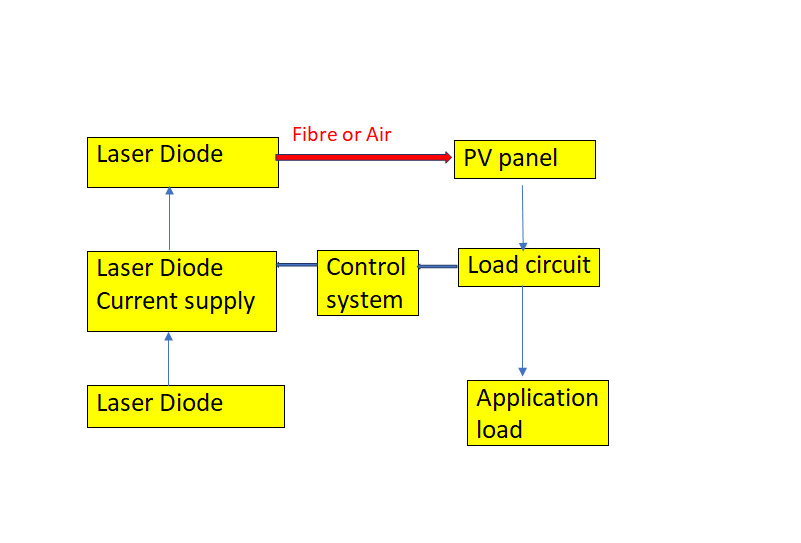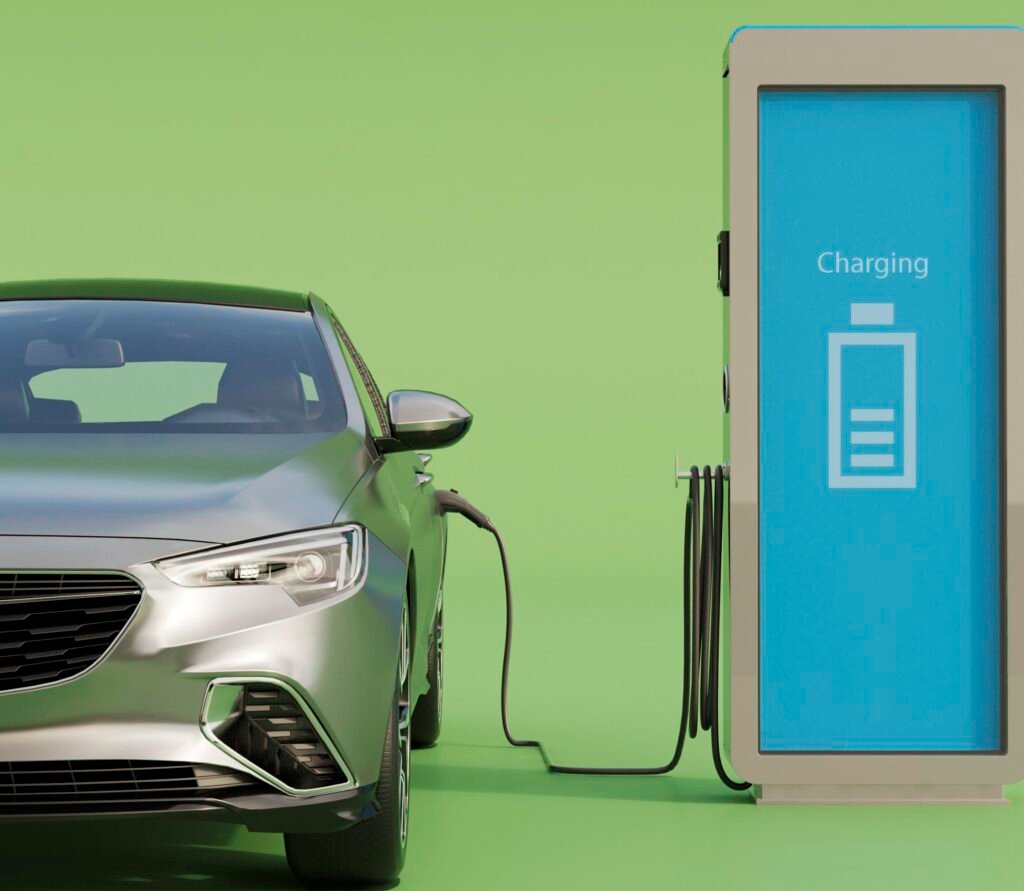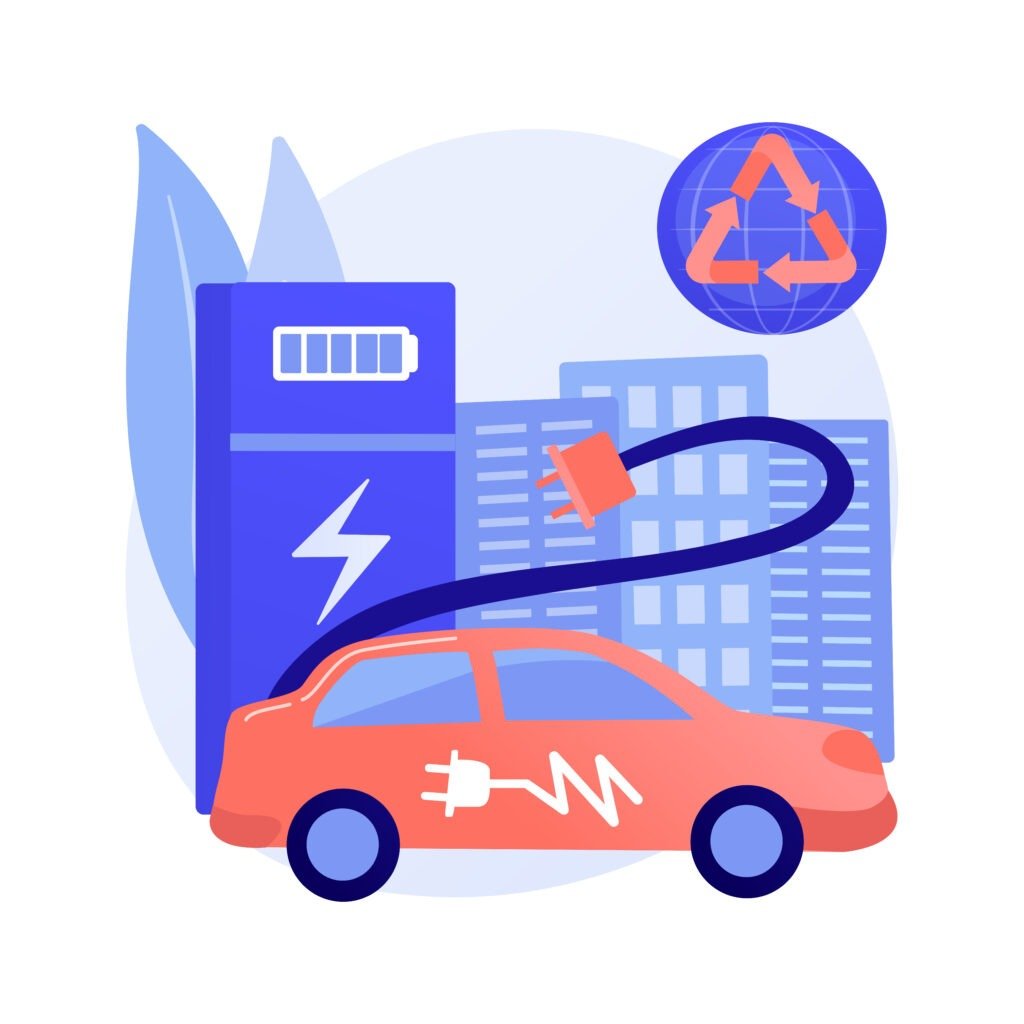Table of Contents
ToggleDefinition
Wireless Laser Power Transmission is electrical power transmission technique in which power transmit through laser beam.Laser beam emission by optical source and subsequent absorption in PV(photovoltaic) panel to transform the laser beam into electricity.
Introduction
Wireless power transmission technology has gained significant attention in recent years due to its potential to revolutionize energy transfer in a more efficient, safe, and eco-friendly manner. In this era, research and development occurred in Laser power transmission.
Laser power transmission (LPT) is considered a potentially efficient way for power delivery, especially in long-distance wireless applications and harsh hazardous environmental conditions. In contrast to other wireless power transmission methods, LPT has many advantages such as lower device size, focused transmitting direction and high power density
Wireless Laser Power Transmission offers contactless transmission, high efficiency, and enhanced safety. This technology has the potential to significantly improve energy transmission efficiency, reduce energy loss, and minimize environmental pollution.
Laser power has been utilised in several novel areas such as weld and de-icing . Because LPT has flexible workplaces and long-distance transmission capabilities, it can be used to transfer energy to drive the motors, thereby avoiding problems related to EMI and high-temperature-influenced problems of many applications such as deep hole drill in oil industries, aircraft and robotics.
LPT can provide wireless power supply to mobile devices, robots, and aerospace vehicles, which can enhance device reliability and lifespan. Herein, this emerging technology could revolutionize how power is transmitted and utilized, ushering in major progress for the energy sector going forward.
Working Method

The laser power supply is used to generate a proper and steady current to the laser diode (LD). The LD converts electricity into a laser and then transfers it through the channel. The receiver consists of PV, which are used for absorbing laser power beams to produce current. Besides, a power controller can be added to the system for rectification. All these processes are controlled by a control system.
Laser emitter is playing a role in converting electrical power into laser power in LPT technology. The most common type of laser emitter is LD, which uses the photogenic volt effect of the PN junction to work. The output power efficiency of LD is changed by changing the supply current of the laser power source.
Solar PV panel is convert laser beam into electricity by photovoltaic effect.A suitable photovoltaic conversion material is very important for absorbing laser energy and improving system efficiency. There are hundreds of materials developed, but the most common photovoltaic materials are Si and GaAs.
LPT Application
LPT systems can be applicable into space-based, ground-based, and underwater types, depending on their intended use.,All categories share common systems, such as the laser emission , laser transmission control subsystem, laser receiving and convert laser into electricity.
LPT is first proposed by NASA for aerospace wireless energy transmission. But due to the limitation of the low conversion efficiency in both LD and PV materials, the LPT is hard to be applied.In the 21st century, with the developed high-power LD and highly efficient GaAs PV, the LPT technology has gradually been applied. Many organisations did the LPT experiment and achieved different power delivery efficiency.
Underwater wireless optical communication is an emerging and feasible underwater wireless communication technology, which uses visible light carriers with blue–green spectrum regions to transmit information data in an ocean environment.
One of the most important applications of LPT has proven to be Space Solar Power Satellite/Station systems. These systems utilize geosynchronous earth orbit (GEO) satellites to gather and convert solar radiation into electrical energy. The collected energy is then transformed and transferred to a designated receiving location on Earth through microwave or laser power.
DC motor Drive using LPT

This LPT model plays a role in a DC/DC converter between current supply and motor load, so conversion efficiency is the first consideration. Choosing different LDs and PVs will have different usage conditions and overall efficiency.
The research and development direction of LPT to achieve motor drive in future mainly has the following aspects: improvement of device conversion efficiency, LPT system’s advanced control strategy and the impact of LPT efficiency on complex environments and improvement methods. Through research progress in these directions, LPT will become a competitive energy transmission method and be widely used.
Recent research in LPT technology
In 2023, the U.S. Naval Research Laboratory’s Space Wireless Energy Link (SWELL) successfully operated in orbit for more than 100 days of laser operation on June 29th. The experiment was launched on March 14 this year and is a successful example of laser power launch in space.
In 2021, Swedish telecommunications company Ericsson and U.Sbased PowerLig Aerospace successfully demonstrated a fully wirelessly powered 5G base station using PowerLig Aerospace’s laser technology to transmit 100 watts of power over a distance of 300 m.
Recently, in 2021, Mohammadnia et al. studied LPT technology in driving next-generation drones. The PV materials were equipped on the drone to receive laser power. The experiment had adopted three different types of 169 Review on laser power transmission PV materials: GaAs, CdTe and c-Ti. They received the power of 73.5 W, 62.6 W and 33.2 W, respectively. In the transmission distance of 500 m, it had a total power transfer efficiency of 12.5% (Mohammadnia et al., 2021).
In 2017, a research team from China Electronics Technology Group Corporation developed an LPT system with a laser wavelength of 808 nm and an output power of 100 W. The laser-to-electricity conversion efficiency at a transmission distance of 50 meters exceeded 28%. In 2020, the same team further completed a demonstration verification experiment for laser charging drones.
In 2016, Russian Energy Rocket Space Group Co. Ltd successfully charged one telephone 1.5 km away. The experiment device converted laser power into electrical power with 60% transfer efficiency.



Very interesting, thank you. Could you please share your sources about the different research projects cited?
Thank you in advance.